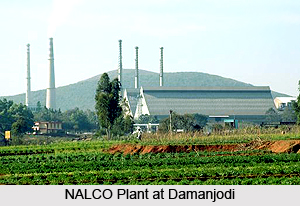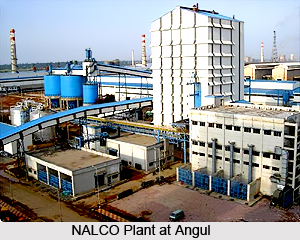 National Aluminium Company, abbreviated as NALCO, is the largest integrated aluminium complex of Asia owned by the Government of India. This public sector encompasses power generation, aluminium smelting and casting, alumina refining, bauxite mining and rail and port operations. It was founded in the year 1981 and was commissioned during the years 1985-87.
National Aluminium Company, abbreviated as NALCO, is the largest integrated aluminium complex of Asia owned by the Government of India. This public sector encompasses power generation, aluminium smelting and casting, alumina refining, bauxite mining and rail and port operations. It was founded in the year 1981 and was commissioned during the years 1985-87.
Units of National Aluminium Company (NALCO)
The major units of NALCO are located at Damanjodi and Nalconagar, Angul of the Indian state Orissa. Damanjodi houses the Mines and Refinery complex and Angul hosts the Smelter and Power Plant Complex. The bauxite mines of NALCO are referred as Panchpatmalli Mines which is situated over a group of five mountains known as Panchpatmalli. These are open pit mines. This bauxite is refined in Damanjodi. The headquarters of NALCO is at Bhubaneshwar, the capital of Orissa. Presently NALCO is undergoing rapid expansion by taking up new projects and is on the way to become the sixth largest metal producer in the world.
 Products of National Aluminium Company (NALCO)
Products of National Aluminium Company (NALCO)
Production of NALCO covers as vast range of products including aluminium metal such as alloy wire rods, wirerods, billets, sows, ingots and cast strips alumina. Hydrates produced by NALCO are alumina hydrate, calcined alumina and zeolite-A. Some special products of the company are specialty hydrate/alumina and aluminium rolled products.
Achievements of National Aluminium Company (NALCO)
For the contribution of NALCO in wasteland development and afforestation, the Government of India has conferred NALCO the Indira Priyadarshini Vrikshamitra Award. In the year 2000, the 1200 MW Captive thermal power plant of NALCO has also won the prestigious Indira Gandhi Paryavaran Puraskar awarded by the Government of India for its excellent involvement in the field of environment management. The achievements of NALCO also include ISO 9001:2000 awards and OHSAS 140001 for its outstanding performance in production technology and occupational health and safety systems respectively. Apart from this, NALCO also received First Mines Safety Award-1988 by DGMS, Best Eco-friendly Factory Award 1994-95 to the Mines and Refinery Complex by Odisha State Factory Inspectorate, State Award-1995 to Captive Power Plant from state Factory inspectorate for Environment Management, FICCI Environment Award for Environment Conservation and Pollution Control- 1996-97, WEC-IIEE-IAEWP Environment award -1997 for contributing towards environment protection, Gem Granite Environment Award for -1997-98 by FIMI, New Delhi for Mines, Shri Sita Ram Rungta Memorial Social Awareness Award-1997-98 by FIMI, New Delhi, Pollution Control Excellence Award - 1998 by Odisha State Pollution Control Board for Mines, Special Commendation under Golden Peacock Environment Management Award 1998 Scheme by World Environment Foundation, State Award for Best Occupational Health Centre to S&P Complex`-1998, Best Safety Performance Award to CPP by CII (ER)- 1999-2000 and The prestigious Dun and Bradstreet`s Best PSU Award - 2012 in Non-Ferrous Metal Category.















